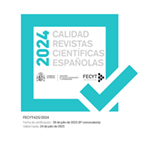Gobierno subliminal: lecciones secretas de la teoría hobbesiana de las imágenes, la representación y la política
Résumé
Los estudios recientes sobre Hobbes han puesto una gran atención en el uso de las imágenes. Permanece, sin embargo, una objeción seria y factible: se podría argumentar que Hobbes no relaciona su producción de imágenes, ni a su política, ni a su teoría de la percepción y que, por tanto, no tenemos razón para creer que sus imágenes son una aplicación de esta doctrina. El propósito de este trabajo es mostrar que Hobbes de hecho sí vincula —de un modo implícito— la construcción de imágenes y su teoría psicológica al orden político. Primero, el artículo reconstruye la teoría hobbesiana de la percepción y sus implicaciones. Segundo, se muestra que el Leviathan establece encubiertamente el vínculo entre la teoría de las imágenes y las imágenes políticas, incluyendo, por consiguiente, las creadas por el propio Hobbes. Tercero, se muestra que el Leviatán de Hobbes rara vez descubre su rol como dispositivo para ver, para hacer que el lector vea imágenes que él considera necesarias. Finalmente, se discuten las consecuencias de este descubrimiento para nuestra comprensión de Hobbes y de la visualidad y las imágenes en el pensamiento político.Téléchargements
##submission.format##
Licence
La revista Las Torres de Lucca. International Journal of Political Philosophy, para fomentar el intercambio global del conocimiento, facilita el acceso sin restricciones a sus contenidos desde el momento de su publicación en la presente edición electrónica, y por eso es una revista de acceso abierto. Los originales publicados en esta revista son propiedad de la Universidad Complutense de Madrid y es obligatorio citar su procedencia en cualquier reproducción total o parcial. Todos los contenidos se distribuyen bajo una licencia de uso y distribución Creative Commons Reconocimiento 4.0 (CC BY 4.0). Esta circunstancia ha de hacerse constar expresamente de esta forma cuando sea necesario. Puede consultar la versión informativa y el texto legal de la licencia.












